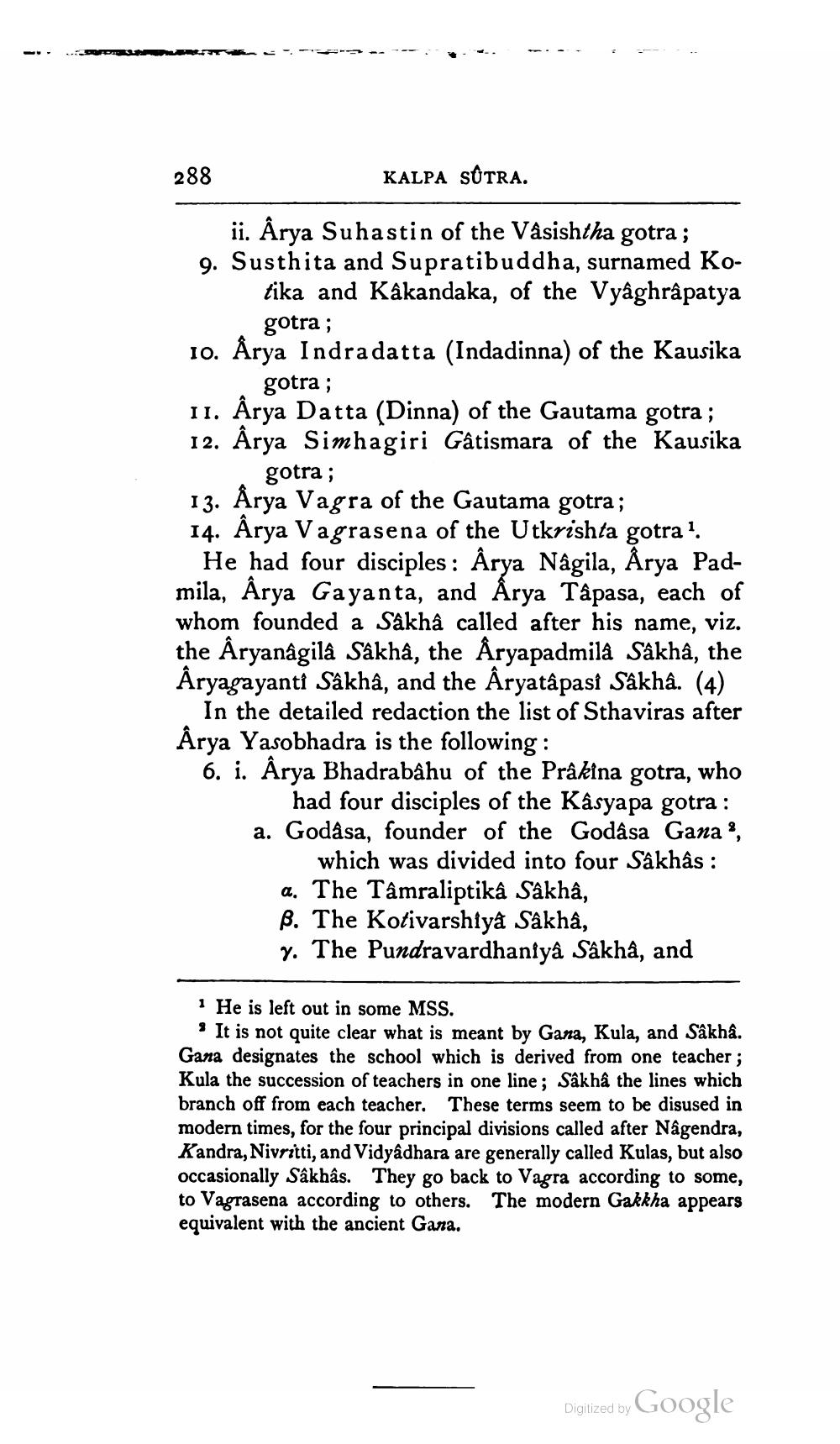________________
288
KALPA SUTRA.
ii. Arya Suhastin of the Vâsishtha gotra; 9. Susthita and Supratibuddha, surnamed Ko
tika and Kakandaka, of the Vyāghrapatya
gotra; 10. Årya Indradatta (Indadinna) of the Kausika
gotra; 11. Ârya Datta (Dinna) of the Gautama gotra ; 12. Arya Simhagiri Gâtismara of the Kausika
gotra; 13. Årya Vagra of the Gautama gotra; 14. Arya Vagrasena of the Utkrishta gotra'.
He had four disciples : Arya Nagila, Arya Padmila, Arya Gayanta, and Årya Tâpasa, each of whom founded a Sâkhâ called after his name, viz. the Aryanâgilà Sâkhâ, the Åryapadmila Sâkhâ, the Aryagayanti Sâkhâ, and the Aryatâpast Sâkhâ. (4)
In the detailed redaction the list of Sthaviras after Arya Yasobhadra is the following: 6. i. Arya Bhadrabâhu of the Prâkina gotra, who
had four disciples of the Kâsyapa gotra : a. Godása, founder of the Godāsa Gana,
which was divided into four Sâkhâs : a. The Tâmraliptika Sâkhâ, B. The Kotivarshiya Sâkhâ, y. The Pundravardhaniyâ Sâkha, and
1 He is left out in some MSS.
It is not quite clear what is meant by Gana, Kula, and Sakha. Gana designates the school which is derived from one teacher; Kula the succession of teachers in one line; Sakhâ the lines which branch off from each teacher. These terms seem to be disused in modern times, for the four principal divisions called after Nagendra, Kandra, Nivritti, and Vidyâdhara are generally called Kulas, but also occasionally Sâkhâs. They go back to Vagra according to some, to Vagrasena according to others. The modern Gakkha appears equivalent with the ancient Gana.
Digitized by Google




